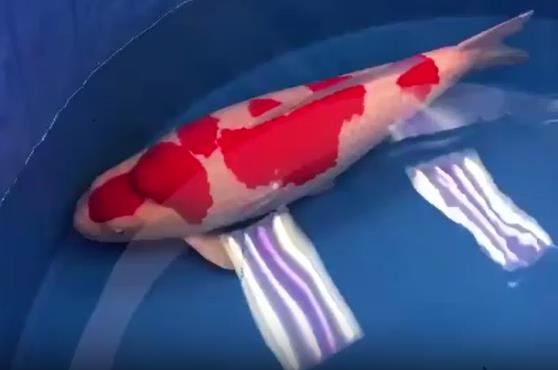Water changing is an essential task in the process of koi fish farming. Water changing is not only to reduce ammonia in the water and increase the pH value but also to prevent the aging of water quality. So, how to change the water in a koi fish tank?

1. Normal water changing. Especially in summer, every day, you just need to gently suck out 1/10 - 1/5 of the feces and debris of koi fish at the bottom of the fish tank along with the old water by using a plastic hose. Remove the dust on the water surface and the floating feces. Then slowly pour new water with the same water temperature along the wall of the fish tank to keep the water quality clean. This water changing method is not likely to harm the fish bodies. It is simple, convenient and safe, and is most suitable for household fish tank farming.
2. Partial water changing. This water changing method is mainly carried out in two situations. One situation is in the hot summer and early autumn. The water for raising koi fish in the fish tank has just been changed for a few days, but the color of the water turns green very quickly (mainly because the amount of feed is relatively small). While the water quality is still clean, in order to prevent the koi fish from getting "burned tails", you can take out all the koi fish from the fish tank, and then make the water in the fish tank rotate in a spiral shape. After it becomes still, suck away 1/3 - 1/2 of the dirt and old water in the middle of the fish tank by using a plastic rubber hose, and then pour in the same amount of new water with the same temperature, and then put the koi fish back into the original fish tank for breeding.
Another situation is that the water in the fish tank has just been changed for a few days and the water color is still good. However, due to excessive feeding on that day and the appearance of fish gasping for air on the water surface, emergency measures must be taken. The way of changing the water is the same as the one mentioned above.
If it's a large fish pond in a fish farm, there's no need to take the koi fish out. Instead, use a folding barrier net to enclose the fish on one side. Then gently rotate the water in the pond with a fishing net for dozens of seconds. After the water becomes still for a while, slowly open the drain gate to drain the water or use a straw to suck away the excessive fish food, feces and old water in the middle of the fish tank or fish pond. Or use a fishing net to scoop out the excessive fish food from the middle, and then drain 1/4 - 1/2 of the old water. Finally, pour in the same amount of new water with the same temperature. This method is commonly used as an emergency measure in fish farms or households when too much food is fed.
3. Complete water changing. This kind of water changing is often carried out simultaneously when turning over the fish tank, selecting juvenile fish or adult fish. It is usually adopted when the water quality is seriously deteriorated or the moss is too long or the fish are too densely populated. There are two specific methods:
When there is no spare pond, you have to take all the koi fish out and put them into basins or put the fish cages into the water of the adjacent pond for temporary breeding. Add oxygen heads in the basins or fish cages to increase oxygen. Then, scrub off the moss on the wall of the original fish tank. After thoroughly rinsing it clean, refill it with new water with the same temperature. Let it stand still for a while until the water temperature is equal, and then put the fish back into the original fish tank.
If there are spare ponds and new water, just take all the koi fish out and put them into basins or fish cages. Sort and handle them respectively. Those that need to be separated into different tanks should be separated. For those that don't need to be separated, they can be moved into the new water for breeding after the water temperature is equal. When using this water changing method, special attention should be paid to the water temperature. It's best to carry it out before 9 o'clock in the morning on a sunny day. However, this method is generally only suitable for adult fish or larger juvenile fish. Fry should not use it. If conditions permit, before complete water changing, you can first fill a spare fish tank with "fu shui" (water that has been exposed to the sun for a long time). Then directly take the fish into the spare fish tank. In this way, the change in water temperature is small, and the fish group can easily adapt to the new environment, saving the fish from the suffering of being crowded in basins or fish cages. This water changing method is generally carried out once every half a month or so in spring and autumn. In the dog days of summer when the water temperature is as high as above 28 °C and the water color is very likely to become thick and the water quality is very likely to become turbid, generally, complete water changing should be carried out once every 5 - 7 days. In winter, when the water temperature drops to about 4 °C, koi fish move slowly and their appetite decreases. The water quality is not easy to deteriorate. Generally, there is no need to change all the water without special circumstances.
